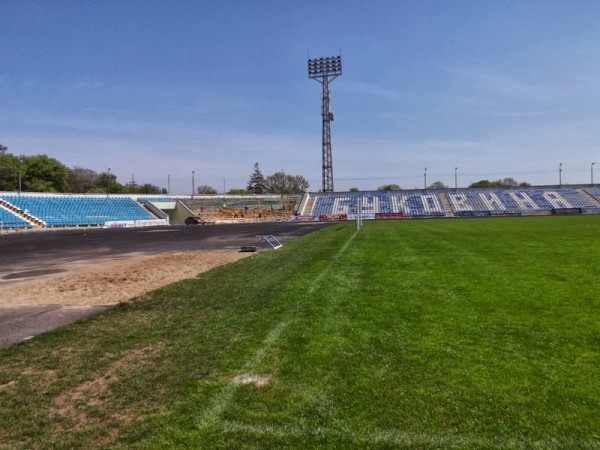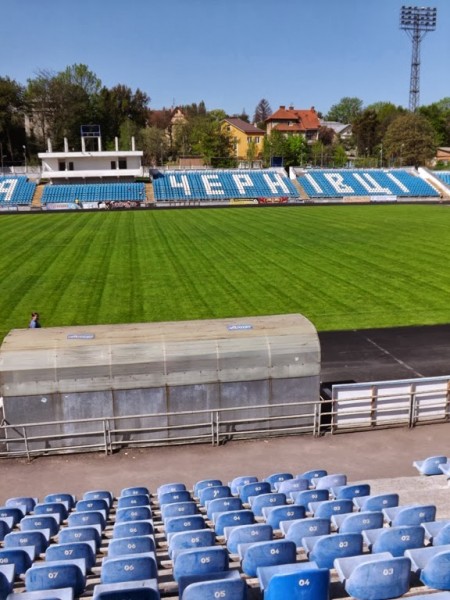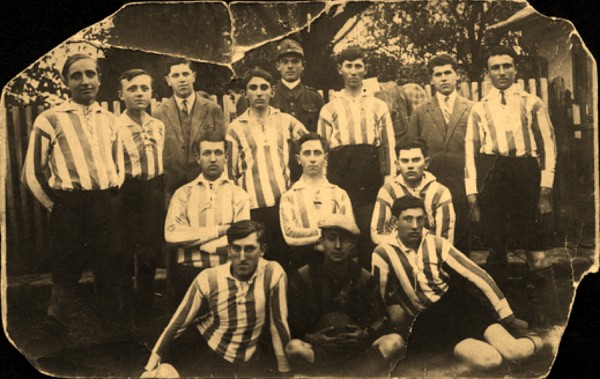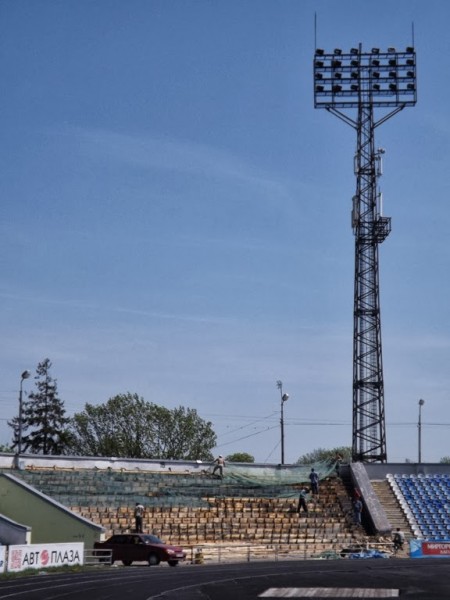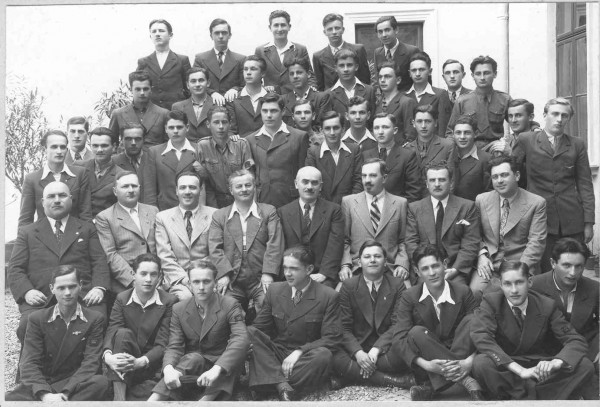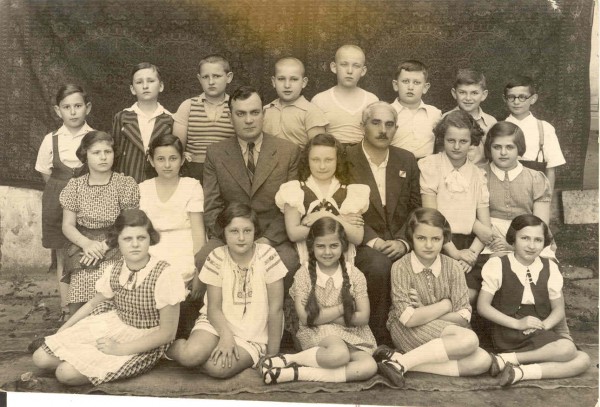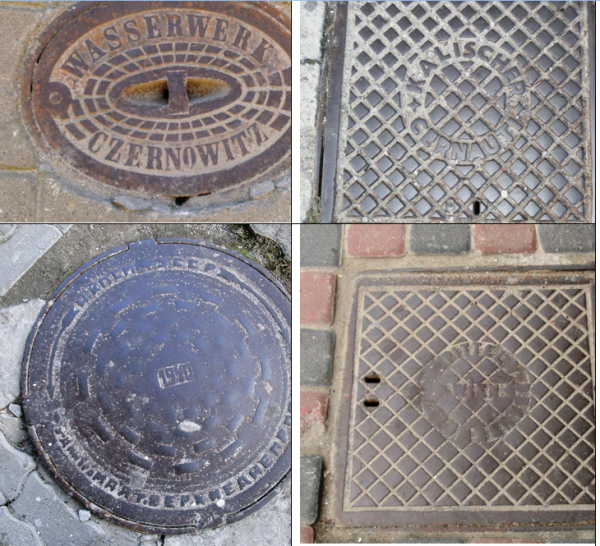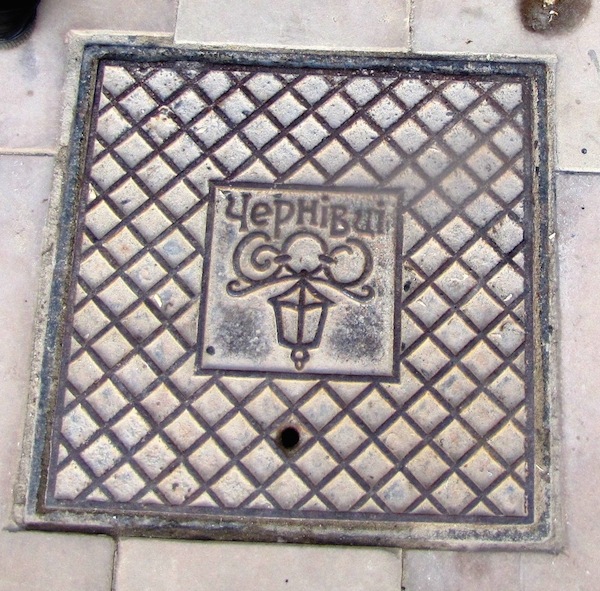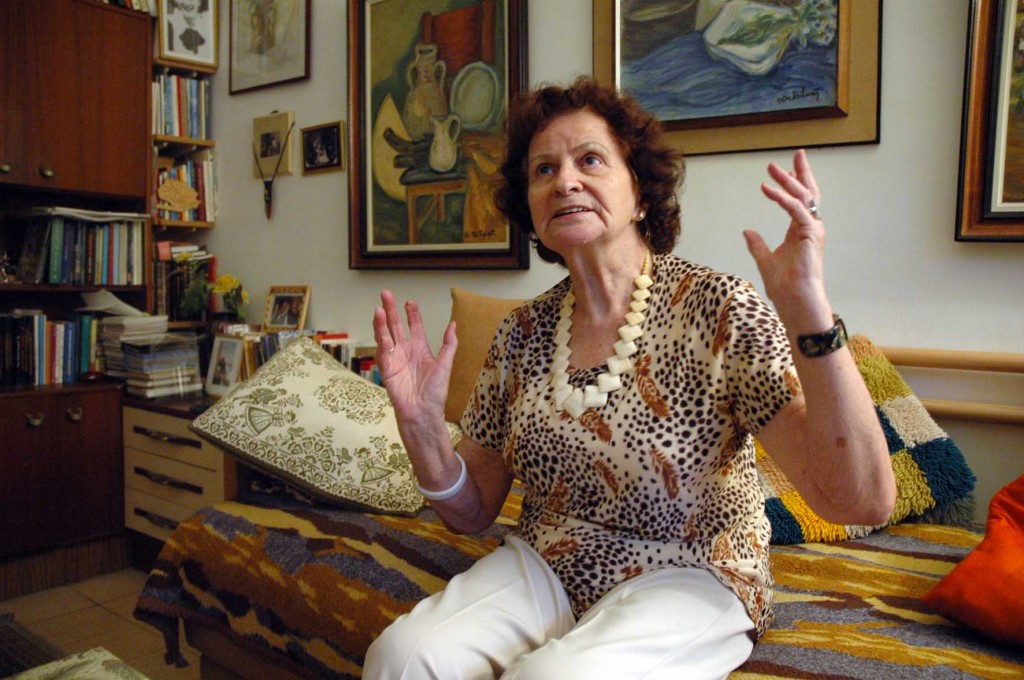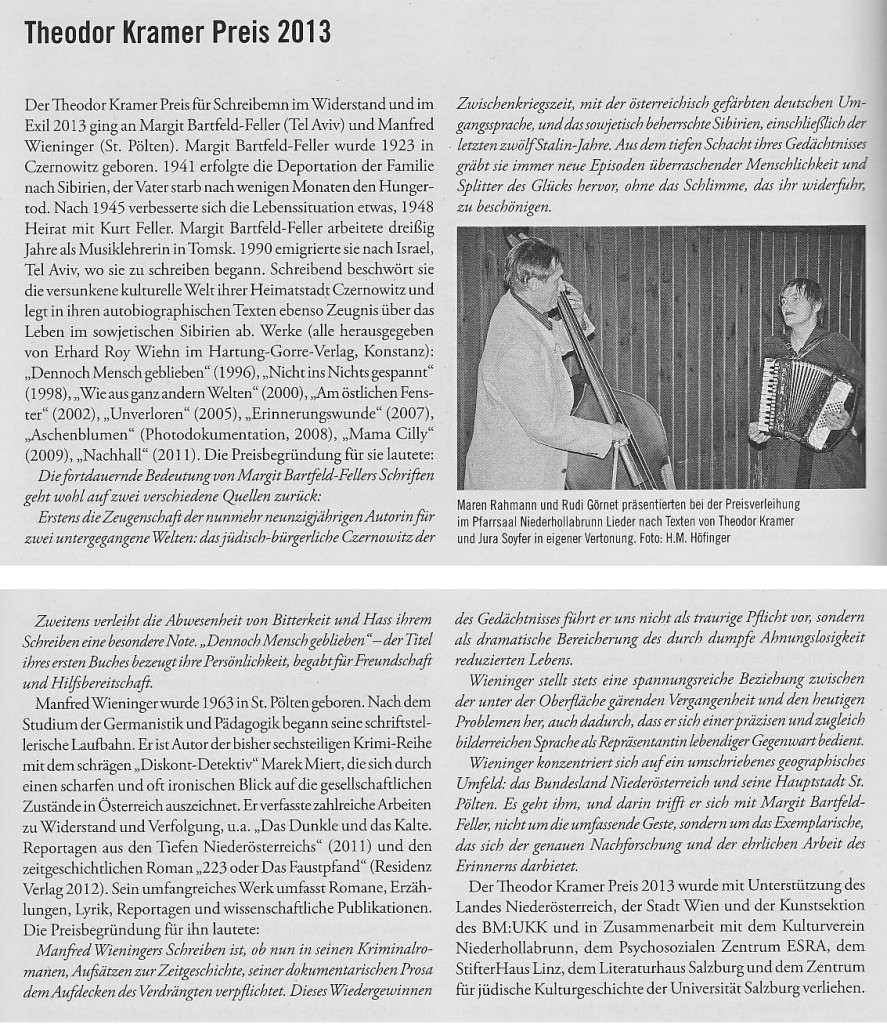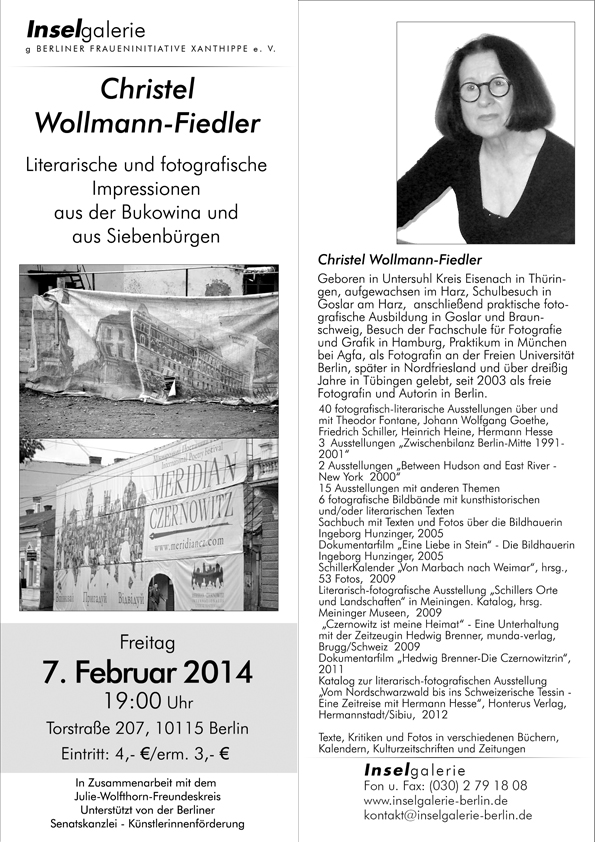Tag Archives: Czernowitz
Football in the Vanished World: Bukovyna Chernivtsi
Guest post by Michael Hudson, originally published at The Accidental Groundhopper on 12 October 2013 and reposted by courtesy of the author. Thank you so much, dear Michael!
“English games are played, as out on the vast exercising ground we saw football in full swing, several games going on”.
“I also played a bit of football, near our house there was a football field; it was the town’s football field, called Maccabi. We had a really good football team. Sports…were very popular among the Jewish organizations”.
For almost two centuries the eastern gateway to the Habsburg Empire, Bukovina was ceded to Romania between the two world wars and is now one of the sleepiest parts of south-western Ukraine. Two hundred kilometres south of Lviv, and a four-hour bus ride from Suceava across the EU border, Chernivtsi, the quirky, down-at-heel provincial capital, was formerly known as Little Vienna and Jerusalem on the Prut; the second city of Austrian Galicia, Czernowitz /Cernăuți was a cosmopolitan mélange of ethnicities, home to Romanian, German, Ukrainian, Yiddish and Polish speakers, the birthplace of the poet Paul Celan, and one of the first places in modern day Ukraine to embrace the sport of football.
The first organised team, Turn- und Sportverein Czernowitz, was founded by German students in the autumn of 1903, the black and whites outlasting several name changes and two losing appearances in the semi-final of the Romanian Cup until they were finally broken up in 1940, when the entire German-speaking population, including the playing staff and officials of Fußballsektion Jahn Czernowitz, was forcibly transported out of Bukovina in the wake of the Nazi-Soviet pact. Many Bukovinan Germans settled in or around Stuttgart, their sporting legacy surviving with TSV Jahn Büsnau, who currently play in a district league at the twelth level of the German football league.
A Polish team, Polonia Cernăuţi, was established after the German club splintered in 1912, and went on to become the region’s dominant force during its twenty-two years in the Kingdom of Romania. Despite rarely owning a stadium of its own, Polonia spent three seasons in Divizia A, won the Bukovinan regional championships and held the Romanian national side to a 1-1 draw in front of 12,000 spectators in September 1922 before they too were dissolved in 1940. Fotbal Club Dragoş Vodă Cernăuţi, the favoured team of the city’s Romanian speakers, won the Bukovina championship four times between 1925 and 1933 but managed only a single season in the national top-flight, during which they won four out of eighteen games. They did, though, share briefly in the development of Cernăuţi’s most famous footballing son, Alfred Eisenbeisser transferring from Jahn shortly before representing Romania at football at the 1930 World Cup . Appearing against Peru and Uruguay, Eisenbeisser contracted pneumonia on the return journey and was forced to stay behind when the ship docked at Genoa. Rumours of his death spread through Bukovina; when he finally reached home, he found his mother busy preparing the funeral arrangements. Eisenbeisser recovered sufficiently to place thirteenth in the figure skating championships at the 1936 Winter Olympics, win another seven caps, and turn out over 140 times in the colours of Venus București. Venus, like Dragos, were wound up in the late-1940s, having won eight national championships before Romania entered the war.
In 1919, when the region was annexed to the Kingdom of Romania, Czernowitz’s Jewish population had reached almost 30,000 people – or a third of the entire town. The city twice elected Jewish mayors, streets were named after Jewish authors, rabbis and prominent city councillors, the first ever Yiddish [Conference] was hosted there in 1908, and the community’s two club sides, Maccabi and Hakoah Cernăuţi, enjoyed regular success in regional competitions.
Maccabi, the oldest, had first taken to the field in 1909-1910, and would later supply a Romanian international of their own when Isidor Gansl, formerly of Fernencvaros [Ferencváros] and Hakoah Vienna, was capped against Turkey in 1923. Hakoah played their first competitive game in 1920, and reached Divizia A and the Romanian Cup quarter-finals before they were subsumed by Maccabi eleven years later. In 1932, a victory over Jahn resulted in a pitch invasion during which Maccabi players were attacked by supporters carrying revolvers shouting “Jews go to Palestine!” By 1941, the team had been disbanded and many of its players transported to camps. When the Soviets rolled back three years later, almost 50,000 Bukovina Jews had perished, either shot out of hand or loaded in to cattle trucks. Jewish Czernowitz vanished in all but memory, its synagogue turned into a cinema six years after Celan published ‘Todesfuge‘ (Death Fugue): Death is a gang boss…his eyes are blue. He shoots you with leaded bullets, his aim is true.
Eight years after the traumatised city was incorporated into the newly-expaned Ukrainian Soviet Socialist Republic, Bukovya Chernivtsi emerged. In 1958, a team including veteran inside-right Evgeny Archangelskiy, scorer of four goals during Dynamo Moscow’s 1945 tour of England, made its first appearances in the Soviet League. Three decades later, with the Soviet Union on the verge of dissolution, Chernivtsi finally made their mark on the national stage, finishing in fifth place in the 1991 First League, a division which included Rotor Volgograd, Kuban Krasnodar, Zenit St Petersburg and Tavria Simferopol, the surprise first champions of independent Ukraine. Present in the top-flight of Ukrainian football for three seasons, the yellow and blacks were relegated along with Metalist Kharkiv in 1993-94 and have since spent eleven seasons in the second tier and the same number in the third. Narrowly surviving extinction this summer, survival is an achievement in itself in a country where four of the original twenty top-flight clubs no longer exist in any form whatsoever.
Chernivtsi has recently spruced itself up, with its red-brick university added to the UNESCO World Heritage list in 2011 and both Central Square and the nearby Olga Kobylianska Street repaved and pedestrianised. The football stadium is just off Holovna, a ten-minute walk from the centre on the other side of Shevchenko Park. The Bukovyna, the city’s fanciest hotel, is directly opposite, the bus station another ten minutes up the road. When I went there, the stadium was empty except for a small group of workmen repairing seats and three sprinters practising their starts. On a dirt pitch next to the ground, a shirts against skins game had just got underway. I watched from the top of the uncovered stand, dust and sunflower shells blowing across my feet.
Index to the Directory for the Municipality of Czernowitz for the Year 1936
First Autobus Lines in Czernowitz
Putting into operation of 10 autobuses, bearing the car numbers 310-319 by I.E.C.M. [Electromechanical Corporation of the Municipality of Czernowitz] on August 26, 1933, servicing three permanent and two seasonal bus routes. The autobuses, Type Fiat 622, assembled in Brașov, were dark red, had a 45 HP engine, 19 seats on luxury leather benches, ventilation systems and double doors, manually or automatically operated by the driver. The bus garage has been erected next to the tramway depot.
Source: http://www.transira.ro/bb3/viewtopic.php?t=4706
Der Omnibus
Durch einige Hauptstraßen der Stadt eilt seit einigen Tagen der städtische Omnibus. Der Anfang ist gemacht: Das Verkehrsnetz der Straßenbahn ist um wenige Linien erweitert worden. Daß es nicht Straßenbahnlinien sind, die, die mit der elektrischen Tramway befahren werden, sondern Omnibusse, tut weiter nichts zur Sache, denn nach den äußeren Erfahrungen des Straßenbahnverkehrs ist die Ersetzung von Straßenbahnlinien durch Omnibusse praktisch, rentabel, dem Verkehr zuträglicher und für das Publikum geeigneter. Was seit Jahren angestrebt wurde, nämlich die Erweiterung des Straßenbahnnetzes, ist also endlich durchgeführt, man muß sich über diese Errungenschaft freuen und die Tat soll anerkannt werden.
Aber was wir mit Bedauern sehen, ist, daß das Publikum den Omnibus meidet, jedenfalls zaghaft den Straßenbahnwagen betritt und im großen und ganzen eine abwartende Haltung einnimmt. Seit mehr als dreißig Jahren ruft die Stadt nach der Erweiterung des Straßenbahnnetzes, endlich ist die Ausdehnung erfolgt, aber für den Czernowitzer gilt hier das Wort: Omnibus ist Omnibus und Tramway ist Tramway. Oder im weiteren Sinne: der Omnibus ersetzt nicht die Tramway. Es ist eine Auffassung, die dieser Stadt paßt und es wäre ein Wunder, wenn es anders wäre. Aber man darf nicht verzagen, hier muß Erziehungsarbeit geleistet werden, es muß dem Czernowitzer beigebracht werden, daß er endlich das hat, wonach er seit Tag und Jahr schreit, das moderne und billige Verkehrsmittel, das alle Verbindungen kreuz und quer schafft und das berufen ist, den Verkehr und damit auch das wirtschaftliche Leben zu fördern. Es muß auch hier der Grundsatz gelten, daß nicht der Verkehr die Tramway geschaffen hat, sondern die Tramway den Verkehr schaffen muß, und daß das, was heute leider noch nicht zu hören ist, nämlich die Zunahme des Verkehrs mit dem Omnibus, in paar Wochen oder in paar Monaten eintreten wird. Diese Erziehungsarbeit muß die Tramwaydirektion vornehmen. Dazu ist notwendig, daß der Omnibus sich auch an bestimmte Abfahrtzeiten gewöhnt, nicht an einer Station stehen bleibt und eine Ewigkeit wartet, bis genug Gäste kommen, ferner daß die Station genau bezeichnet wird, also richtige Haltestellen etabliert werden, kurz, daß der Verkehr in ein System gebracht wird. Es darf nicht geschehen, daß die Konkurrenz heute und morgen auf den neuen und schönen Omnibus, eine Zier des Stadtbildes, höhnisch und verächtlich weise, als ob Czernowitz in einem Anfalle von Größenwahn sich einen modernen Omnibus angemaßt hat, der ihm nicht gebührt – nein, das darf nicht sein. Der Omnibus ist eine Notwendigkeit, kein Luxusstück, sondern so notwendig wie das Wasser. Es darf die Gemüsefrau von Rosch sich nicht vom Verkehr fernhalten. Der Omnibus ist nicht für die reichen und eleganten Menschen, sondern für das Volk da. Und weil es so ist, muß auch die Tarifbestimmung sich diesen Erfordernissen anpassen. Wir sehen, daß auch die Organe sich mit dem Omnibus nicht richtig befreundet haben. Der Schaffner sitzt im Wagen, wenn die Station kommt, er muß bei der Station aussteigen, beim Aus- und Einsteigen behilflich sein. Es muß also der richtige Dienst am Kunden versehen werden. Es sei das Geständnis abgelegt, daß wir für den Omnibus die größte Propaganda führen wollen, gerade deshalb, weil er noch heute gemieden wird. Der konservative Czernowitzer soll sich zuerst an das neue Verkehrsmittel gewöhnen und bald wird der Omnibus zu dieser Stadt so gehören, wie Czernowitz ohne den alten Rathausturm nicht zu denken ist.
Ego.
Three Schools in Czernowitz – Three Class Photos
Czernowitz – Jewish City of German Language
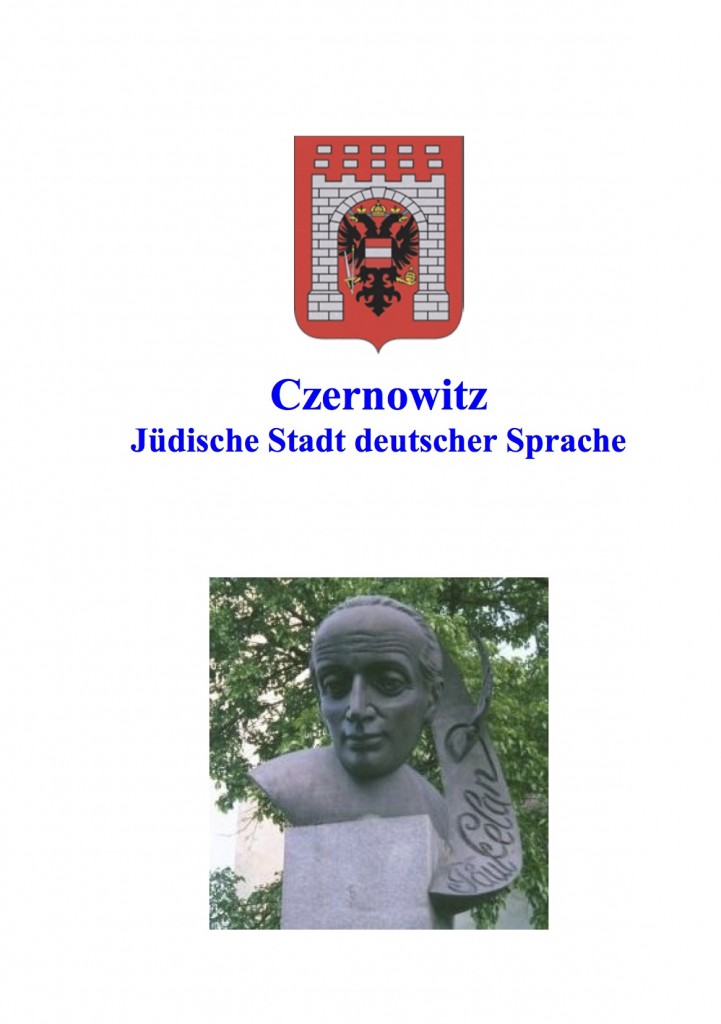 Click on the front cover for a – free – copy of Friedrich J. Ortwein’s book!
Click on the front cover for a – free – copy of Friedrich J. Ortwein’s book!
Friedrich J. Ortwein: “Up until now, I was profoundly convinced, that the love and the devotion of the citizens of Cologne to their home town, the antique CCAA (Colonia Claudia Ara Agrippinensium), one of the Daughters of Rome and free imperial city, cannot be exceeded by anybody in the world. But during the travel preparations for our journey to Galicia and Bukovina, when I came across the website of the Jews expelled from CZERNOWITZ, I had to reverse: The children and grandchildren of Czernowitzers, together with a few Holocaust survivors, have created a website containing a huge data volume and so they emphasize in an unique and inimitable way their love for the home country of their ancestors.
Forum members from all over the world, from the Americas, from Australia and South Africa, from Israel and Europe analyze, comment and swap ideas on events, research their genealogical roots, discuss and value rediscovered archival materials, enjoy old and new photos, exchange holiday and birthday wishes and all this happens in English with embedded German, Yiddish and Hebrew particles.”
Manhole Cover Variety in Czernowitz
The Theodor Kramer Prize 2013 Awarded to Margit Bartfeld-Feller
The Theodor Kramer Prize of the Theodor Kramer Society is awarded to authors writing in a context of resistance or exile. The Holocaust memoirs of Margit Bartfeld-Feller, born on March 31, 1923 in Czernowitz, deported in 1941 to Siberia and emigrated to Israel in 1990 became known to a broad public. Margit Bartfeld-Feller gets in line with other famous prize winners, some of them from Czernowitz, such as
2001: Stella Rotenberg
2002: Alfredo Bauer und Fritz Kalmar
2003: Fred Wander
2004: Michael Guttenbrunner
2005: Georg Stefan Troller
2006: Milo Dor (postum) und Robert Sommer
2007: Jakov Lind
2008: Tuvia Rübner
2009: Ilana Shmueli und Josef Burg
2010: Elazar Benyoëtz
2011: Ruth Klüger
2012: Eva Kollisch
2013: Manfred Wieninger
Article on the prize award ceremony, published in the Decemer 2013 edition of Zwischenwelt
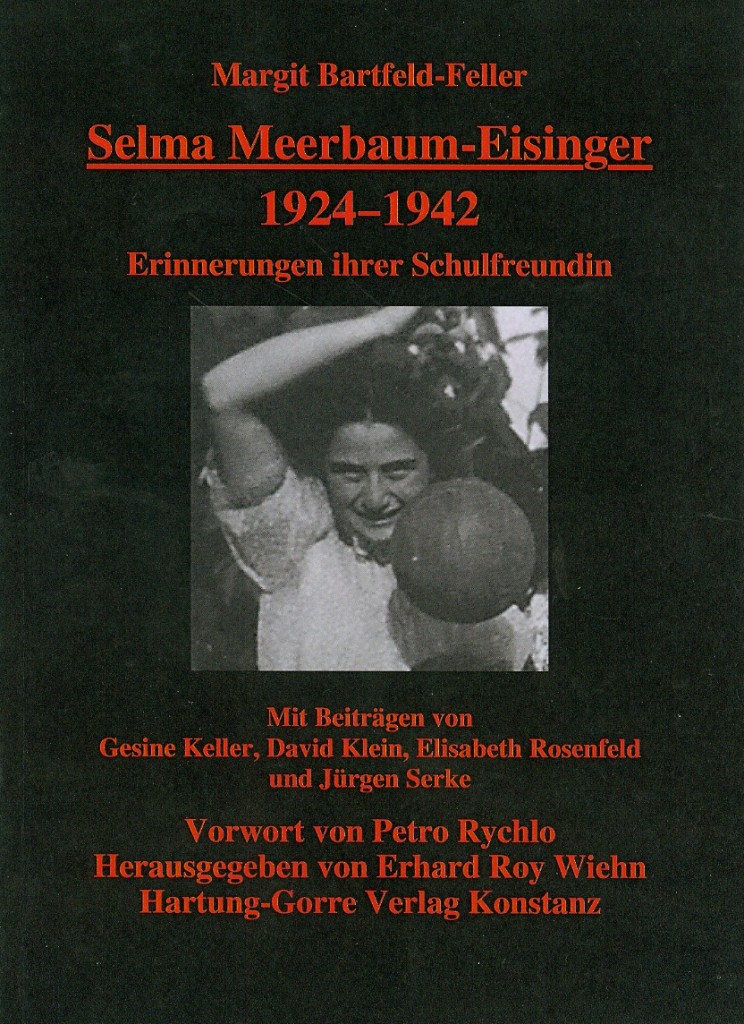
„Ich möchte leben“
Selma Meerbaum-Eisinger, 1924 – 1942
Laudatio für Selma Meerbaum-Eisinger
und Margit Bartfeld-Feller
und Rezension
von Christel Wollmann-Fiedler, Berlin
The Atlantic: Chernivtsi on January 24, 2014
The Atlantic, January 28, 2014: “Anti-government protesters mass outside the regional administration headquarters as they attempt to take over during a rally, with Interior Ministry members standing guard inside the building, in the town of Chernivtsi in southwestern Ukraine, on January 24, 2014. (Reuters/Stringer)”



